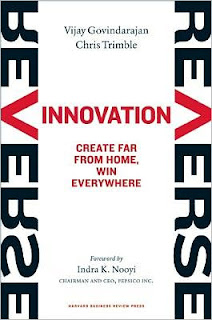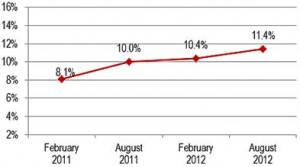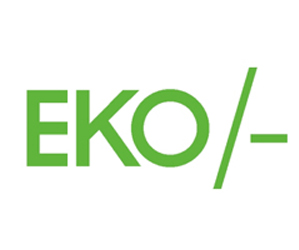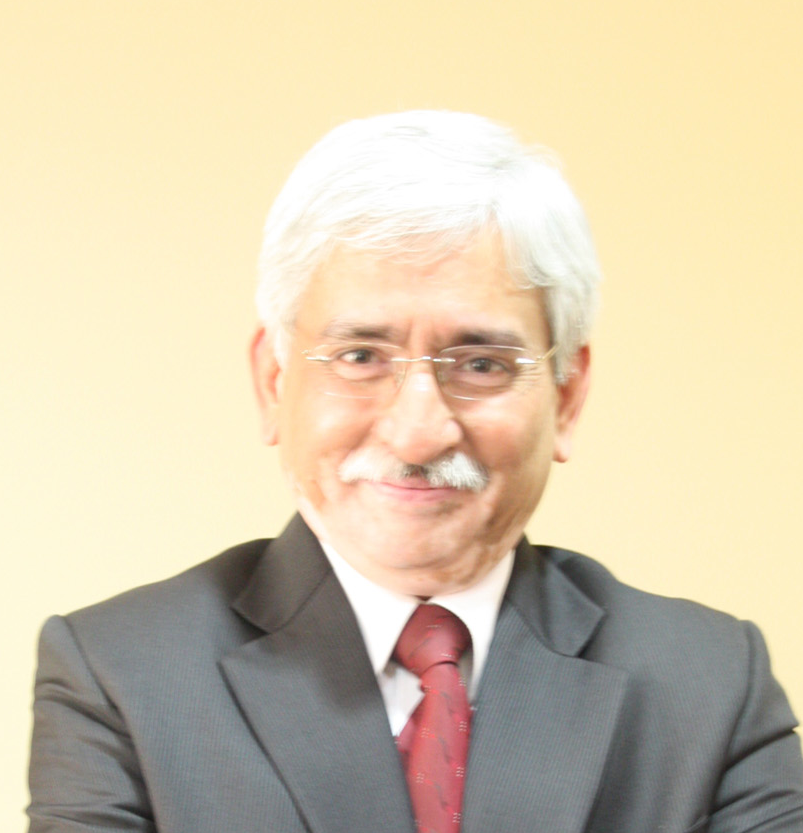Vishnu R. Dusad is one of the founders of Nucleus Software Exports Ltd, and is presently the company’s Managing Director. An alumnus of IIT-Delhi, Mr.Dusad’s vision and passionate belief in product development has helped establish Nucleus Software Exports Ltd as a leading, global software product company. His experience spans areas of software development, creation of strategic alliances, business development, and strategic planning. In an interview with pn.ispirt.in, Mr. Dusad talks about why Nucleus Software Exports Ltd ventured into the product space, transitioning from a services company to a product company and the importance of family support for entrepreneurs
You started Nucleus in 1996, at a time when the flood was to get to the US and provide software services. You went against the tide and concentrated on doing something in products. What caused you to go for this differentiator – why did you get into products?
The whole world at that time was talking about how no products were coming out of India and this was something that was a point of concern for me. So initially we got into this space to demonstrate that India can create world class intellectual property, and that’s what drove us into this direction. At the board level, we took a very conscious decision that despite the fact that the trend was to concentrate on providing services outside the country, we would not have any revenue coming from this area because it would divert our attention from the focus on products.
So one factor was this conscious decision to do something different – but then why choose financial services?
This was actually coincidental because we started Nucleus Software in 1986 and for a good six or seven years, Citibank was our only customer. So we felt that this gave us a good understanding of the banking and financial services sector, and it felt like a good idea to stay in that domain and build a product.
The risk factor at that time must have been high, so what was your mind-set at that time?
You’re right; the risk factor was very high. We came out with an IPO, where shares cost  50 a piece and soon after — thanks to our product focus — our revenues fell to a share price of
50 a piece and soon after — thanks to our product focus — our revenues fell to a share price of  9! We were not used to the stock market, and we did feel bad because of the huge risk we had taken. However, at the same time we were confident that we could do a reasonable job in the track we had chosen. There were a few weak moments when we had doubts in our minds, like the time when we lost an order for an account we had pursued for nearly seven months. At times like that we questioned if we were doing justice to shareholders’ money, but we felt we had the spirit to make things happen.
9! We were not used to the stock market, and we did feel bad because of the huge risk we had taken. However, at the same time we were confident that we could do a reasonable job in the track we had chosen. There were a few weak moments when we had doubts in our minds, like the time when we lost an order for an account we had pursued for nearly seven months. At times like that we questioned if we were doing justice to shareholders’ money, but we felt we had the spirit to make things happen.
After six years of having Citibank as your primary customer, you took a call to do product development and you probably had to undergo a major shift in thinking internally. How did you tackle the HR factor – how did you get your people to re-align to a product development methodology? Or did you get a different team in place?
I would say that both things happened: we brought in a separate team who was oriented towards product development. That team started working on new products, independent of our services revenue. In terms of our services team, we thankfully were never into the business model where we worked according to x number of people multiplied by y hours per person per month – we were always into projects. In fact, we were already used to taking on fixed-price projects right from 1991 – 1992. So we were confident about making the transition into a product company, because our services team was halfway oriented with achieving something within a limited time frame. To make sure that the customer was always deriving business benefits out of the work we were doing, we never talked to technology teams alone. We were always talking to the business team also. So to align the entire company around product development wasn’t very difficult.
How did you manage talent in those days? Did you have to invest a lot in terms of re-training them?
For hiring talent, we went to places like the Delhi College of Engineering and BITS – Pilani. I would say re-training wasn’t such an issue because thanks to our business practices and opportunities, we’ve had a whole lot of people who stayed with us for a decade and more. This helped us ensure that domain and business knowledge was retained within the company, and could we could preserve the shape of the project.
As a company who focused on aspects like cash-management and products around core-banking loans, there was competition on the landscape. There were other smaller niche players like CashTek, as well as Citibank’s own captive business in the country. So was competition ever a concern or did you feel the pie big enough? How did you tackle expansion?
Around the time our product was ready, we were already aware that our existing competition were running their own product. We did fear that the market wouldn’t be big enough in the country and that we’d have to go overseas – but we were wrong. Surprisingly, when we bumped into one of our earliest customers at a conference and we showed them our product, they started asking “Where were you all this time?” So this gave us the perspective that there was definitely a sizeable market, and we didn’t have to be unnecessarily concerned.
In terms of growing the company, we recognized that the existing team comprised mostly hard-core techies, so we brought in sales people to join the team. Initially, we were worried that to drive sales they would need to have an exhaustive understanding of the domain and the technology – but again we surprised to find that it was not such a big challenge. We then started participating in events, we started making cold calls and we were able to bid in the international markets. We started having MNCs signing up with is in India, who would be happy with our work and would recommend us to other companies and we’d get the next contract. This took us to the next level globally, and that’s how we built up the business. We didn’t hesitate in investing in marketing – as our services business continued to grow, we ploughed that revenue into the marketing.
There’s been a lot happening in the product development space, like a change in momentum and the development of the SaaS model. You’ve been a solid player in the market now so how do you see the future for product development? How do you see product companies going forward?
We believe the future is bright for product companies as long as they are committed to understanding the domain and are focused on providing meaningful solutions. There will be no dearth of market for companies like these. There is a lot of technological development happening, so it’s up to these product companies to leverage these developments on and on-going basis. This should be with the focus of using this technology for customers in your domain and continue to add value.
You’re an alumnus of IIT-Delhi, and there are a lot of companies today who are getting into the product space in the start-up category who are being led by CEOs from IIT. So in a sense, they are jumping straight into forming companies. Would you say this is a big asset, since they come already orientated with technology and create companies that offer a technology solution?
I would say that if you have a bent of mind which says that “I have to add some value to society” and you are passionate about it, then experience is immaterial. There are global brands which have been created by dropouts, or people who have just graduated. According to me, the only components that are required are the passion to make a successful product and the passion to bring value to customers.
You are an entrepreneur who took the plunge at a time when the future wasn’t very clear. Today, there are a lot of guys who are standing on the edge of this pool are undecided about whether they want to jump in or not. What are the things that you would advise them to keep their eye on when they start a product enterprise?
Depending on the age at which the individual is getting into the software product development space, family support is very important. This is different before marriage and after! This support may not be just financial, but also psychological. In my case, I was fortunate since I was not required to get a job and straight away start sending money home – I could choose to do whatever I wanted. I came from a family where getting into business was the thing to. So I am lucky to have a family who provides me with unflinching support. So this is one core component, in my opinion.
Another thing you need to have is the passion to make things happen, because you can’t afford to give up. There will be enough moments and situations where you will ask yourself, “Am I going to pass this hurdle or will I collapse on the way?” You need your internal support system to let yourself and everyone around know that you are going to deal with this. You also need to give this support to customers and show them your internal strength to inspire confidence. Go in with the intention to understand your customers’ needs and bring your technical (and other) capabilities to fulfill those needs. It’s natural to feel that when you have created something, customers are going to line up at your door but it doesn’t work like that. You need to find out what the pain areas are and what customers are excited about.
5 key take-aways from Vishnu Dusad’s interview
No products were coming out of India and this was something that was a point of concern for me.
To make sure that the customer was always deriving business benefits out of the work we were doing, we talked to both technology and business teams together.
Nucleus Software Exports Ltd.’s business practices and opportunities helped retain talent for considerable periods. This ensured that domain and business knowledge was retained within the company.
The future is bright for product companies as long as they are committed to understanding the domain and are focused on providing meaningful solutions.
The only components that are required are the passion to make a successful product and the passion to bring value to customers.























